Kingdom Animalia Subfamily Myrmicinae Genus Pheidologeton Phylum Arthropoda Rank Species | Family Formicidae Tribe Solenopsidini Scientific name Pheidologeton diversus Higher classification Carebara Order Hymenopterans | |
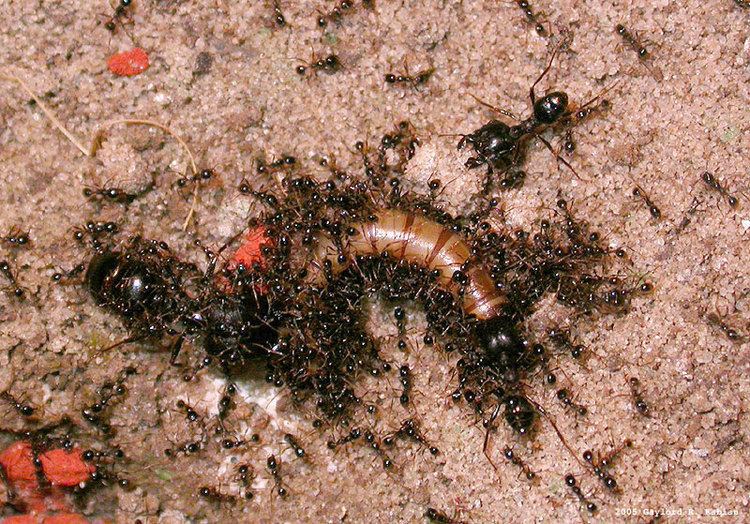 | ||
Similar Carebara, Ant, Carebara diversa, Insect, Polyrhachis dives | ||
Pheidologeton diversus test tube view
Pheidologeton diversus, common name East Indian harvesting ant, is a species of marauder ant widely distributed throughout Asia.
Contents
- Pheidologeton diversus test tube view
- Pheidologeton diversus
- Description
- Behavior
- Differences between Pheidologeton species and real army ants
- Contradictory reports about aggressivity
- Range
- Subspecies
- Keeping in a terrarium
- References
Pheidologeton diversus
Description
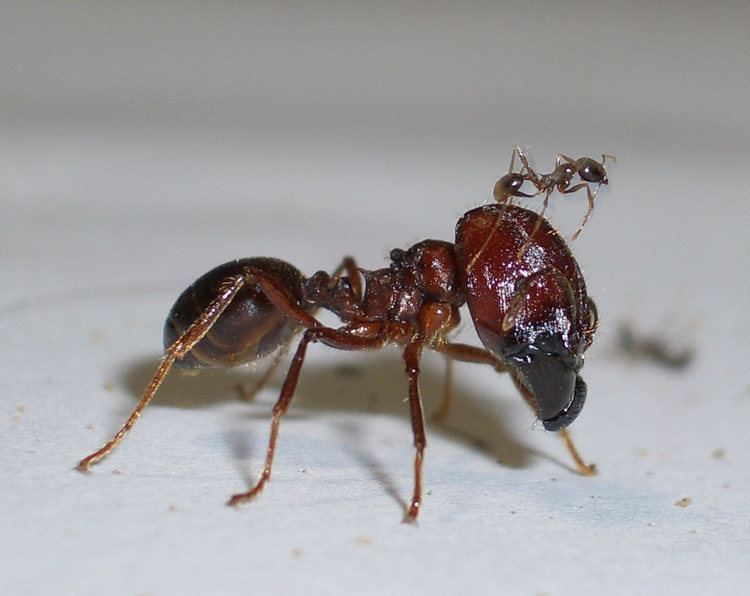
P. diversus is a eusocial insect and individuals have continuous allometric variation in size and morphology to facilitate task allocation and partitioning of work. Minor workers are between 1.3 and 2.5 mm in length, but major workers are much larger. Between the smallest minor and largest major workers there are many intermediate forms. The largest workers can have heads approximately 10 times as large as those of their smallest counterparts. The dry weight of a large major worker can be approximately 500 times as heavy of that of its smallest counterpart. These size-related morphological differences correspond with their division of labor. For example, small, young, minor workers specialize in caring for the larvae but extend their activities as they grow older.
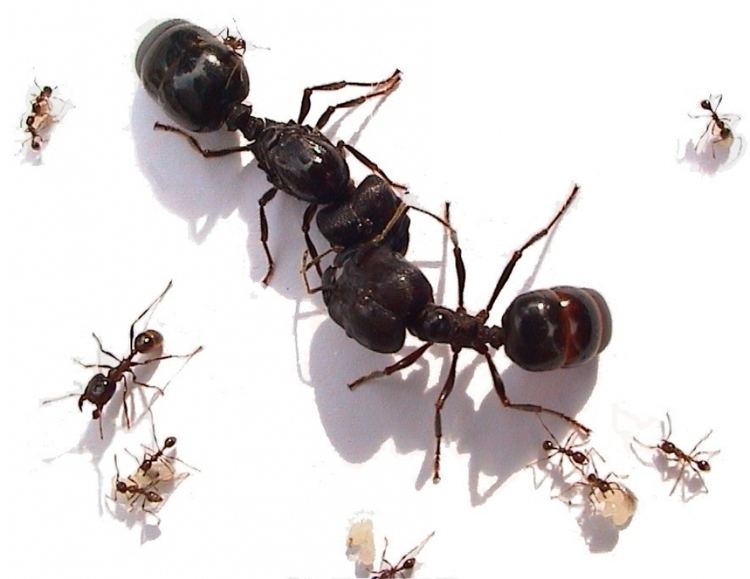
Minor workers have yellowish brown to reddish brown bodies. Their mandibles each have five "teeth" and their antennal scapes are short and do not exceed the posterior margin of the head. Minor workers have rectangular heads with weakly convex posterior margins in full face view
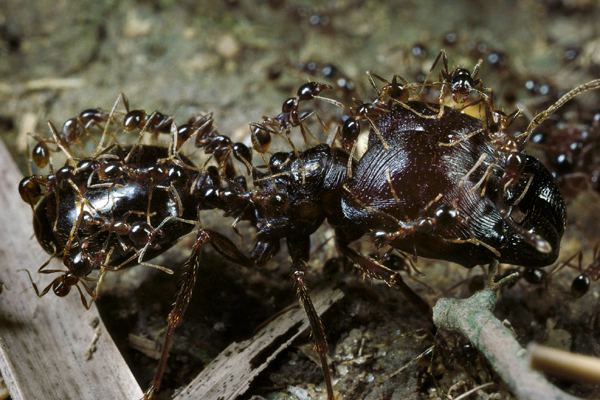
Major workers have reddish brown to blackish brown bodies. Their heads are proportionately larger and almost square with convex posterior margin in frontal view. Mandibles of major workers are large and triangular, with an acute apical "tooth". Their masticatory margins lack distinct "teeth". Their eyes are relatively small and their antennal scapes are half as long as their heads.
Behavior

P. diversus forms large colonies which are often found in soil or under rocks. This species preys on small animals such as insects and also collects nectivorous materials. These ants regularly form long columns for foraging and sometimes roof these trails with arcades constructed of soil particles. They use pheromone trails to maintain these lines and if these trails are obstructed it causes chaos and crowding. One study showed that 98% of individuals failed to cross an obstacle in the foraging path and that eventually the column creates a detour around such obstructions.
Differences between Pheidologeton species and real army ants
Due to their raids, Pheidologeton species are often compared to army ants, but there are some important differences:

Contradictory reports about aggressivity
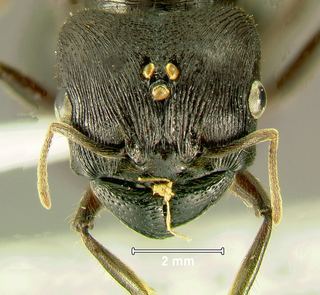
Pheidologeton species have been described as very aggressive when hunting or defending their nest, but there are contradictory reports about how they react to other ant species: Generally, Pheidologeton species are said to avoid fights with other ant species (a keeper has reported he almost lost his colony to a Lasius niger invasion and watched Pheidologeton evading smaller Pheidole pieli, but a keeper who intentionally kept P. diversus with a Crematogaster species in the same terrarium reported that Pheidologeton workers had attacked and killed Crematogaster workers.)
Range
P. diversus is widely distributed from India through Southeast Asia to Taiwan and the Philippines. Field records of it occurring Japan are limited although it has been found on two very southern points: Okinawa Island and on Chicchi-jima Island. Specimens taken at the Camp Zama U.S. Air Force base in Kanagawa Prefecture are believed to have originated from commercial introduction from Southeast Asia.
Subspecies
The following subspecies have been noted:
Keeping in a terrarium
Regarded as "pseudo-army-ants," Pheidologeton diversus and Pheidologeton affinis are popular pets, but they are said to be very sensitive and difficult to keep; even some experienced antkeepers have lost their colonies just after a few months.
It seems not possible to keep real army ants in a terrarium for a longer time because of their nomadic lifestyle, the continuous growth of the colony, and the immense need of food (some army-ant species are also highly selective when it comes to food). In trials performed by zoos and museums, the army-ant colonies died within weeks or months.
